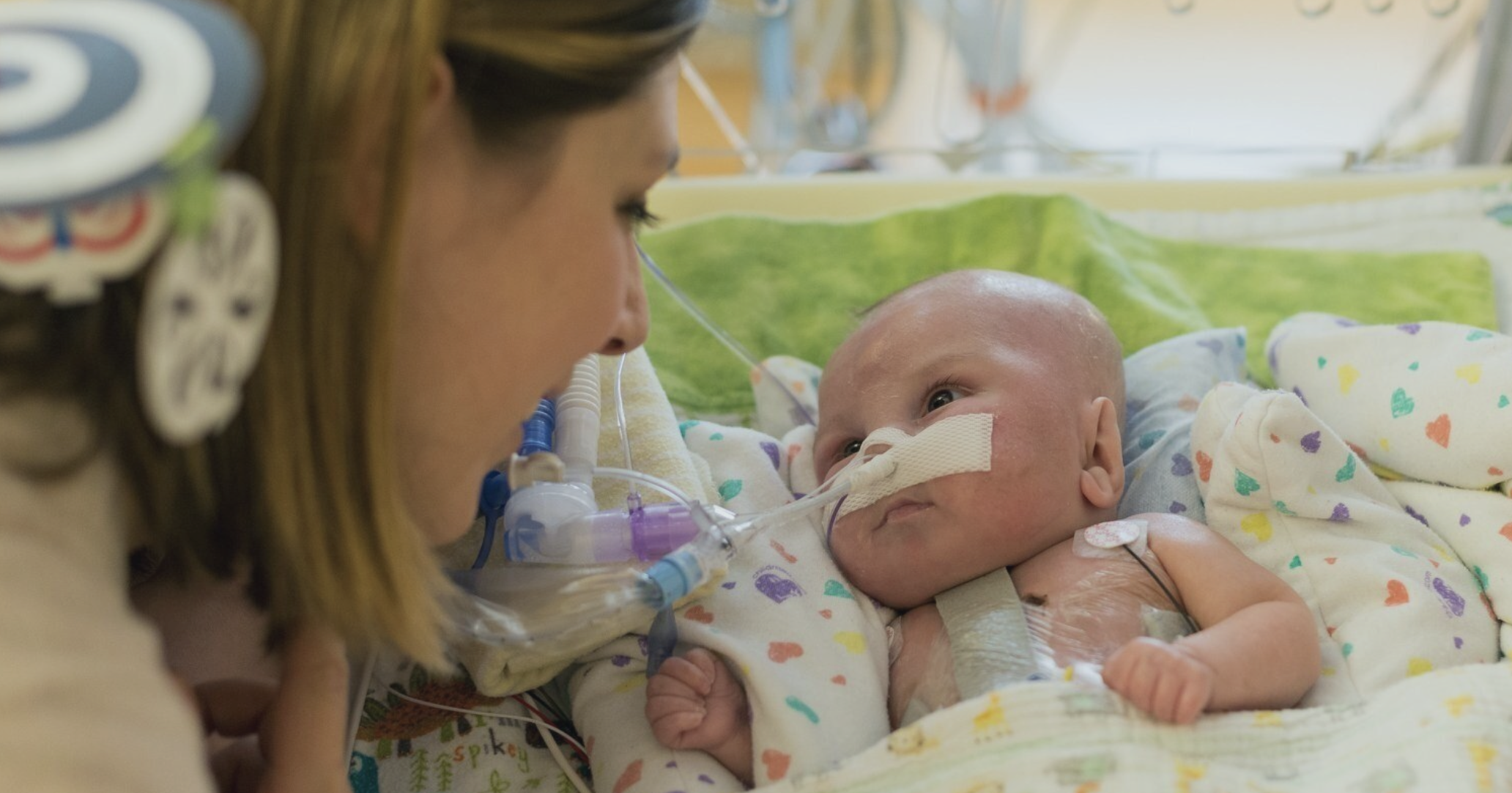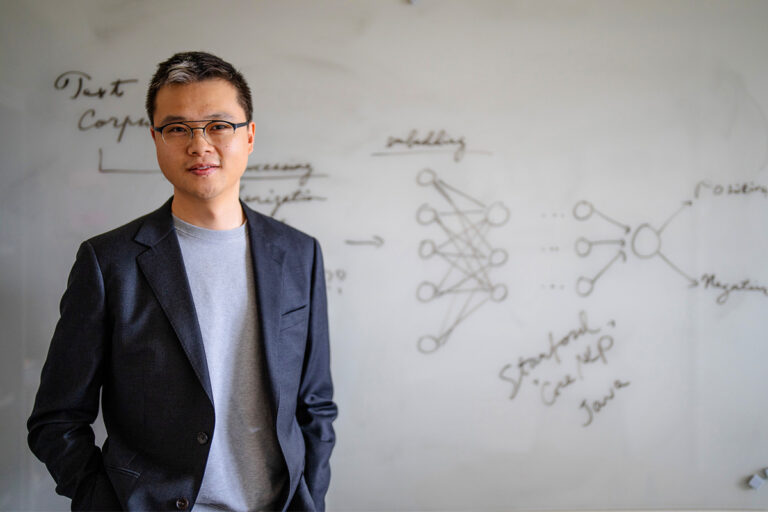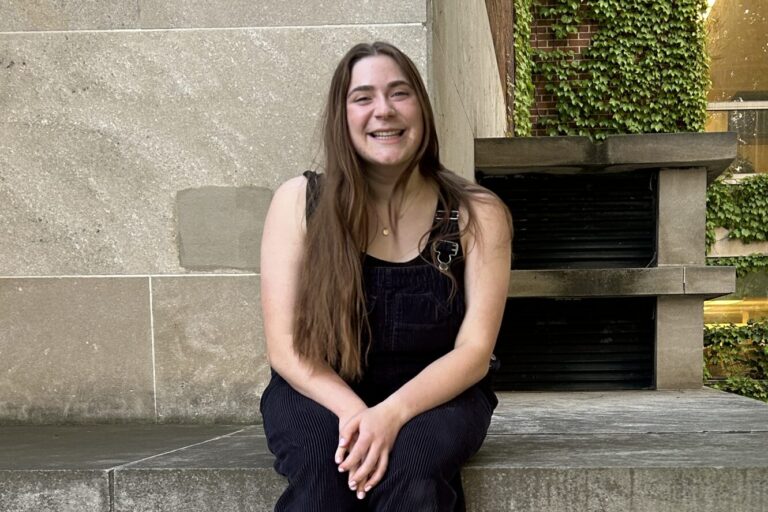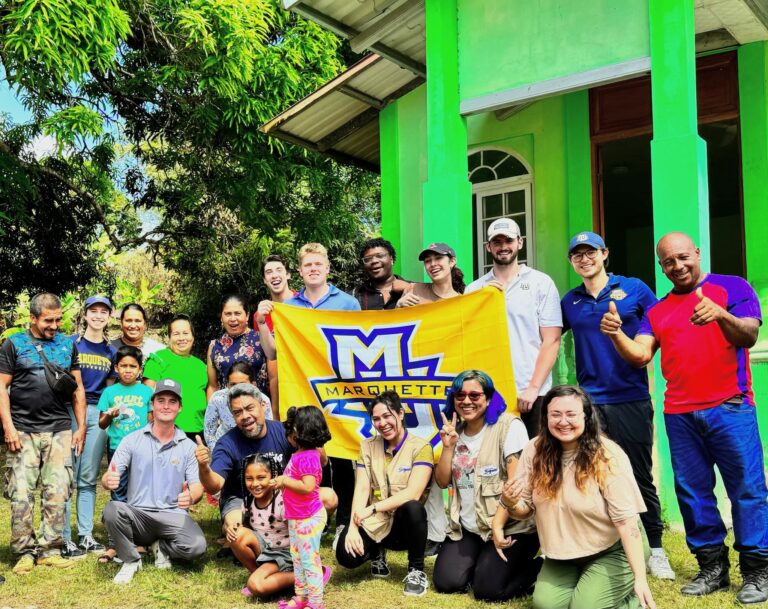Theo was born two months early at Children’s Wisconsin, weighing all of 3 pounds and 3 ounces.
His mother, Dr. Callie Chiroff, had known for months what would happen after his birth.
“He needed immediate heart surgery the next day; it wasn’t something we could wait on,” Chiroff recalls.
That was the beginning of a six-month fight. Theo was born with a rare kind of congenital heart disease, or CHD. His left pulmonary veins, which are supposed to carry freshly oxygenated blood to the left atrium for distribution throughout the body, never connected correctly. He was placed on a ventilator full time.
Doctors told Chiroff something was wrong with her son’s heart at her 20-week ultrasound. She knew her son faced long odds of survival, but she held out hope until roughly four months after Theo’s birth, when it became clear that he would not survive.
“He never made it off the ventilator and never made any positive progress. Eventually, it got to the point where he needed major life support measures just to stay alive,” Chiroff says.
Theo died in March of 2018.
When Chiroff, an associate professor in the College of Nursing, returned to work, she found herself grieving “every day, every hour.” She wanted to do something to honor Theo’s legacy and support other parents going through similar experiences with their children.
“I’m a doer and a busy person; I like keeping my mind busy and I knew that I wanted to use all this horrible energy for something good,” Chiroff says.
That impulse turned into Project Bubaloo, Chiroff’s nonprofit that raises funds for both CHD research and developmental resources for kids like Theo. Since 2018, Project Bubaloo has donated hundreds of thousands of dollars to the cause, funding everything from quality improvement projects for better feeding methods to groundbreaking studies from top cardiac researchers.
There are far more children impacted by CHD than many realize. The Centers for Disease Control estimate that 1 percent of children are born with some form of CHD, roughly 40,000 births per year in the United States. A quarter of those babies have critical CHDs, characterized by a need for surgery or other life-sustaining procedures in their first year.
Weston Pangborn was in that unfortunate 25 percent. He was born with Hypoplastic Left Heart Syndrome, a condition where the left side of his heart did not develop properly. After two stints on life support and multiple open-heart surgeries, Weston died six-and-a-half months after he was born.
The cardiologist that Samantha Pangborn, Weston’s mother, used was close friends with Chiroff and told Pangborn to reach out to her, knowing that Pangborn wanted to get involved in the CHD community. Two weeks later, Chiroff was sitting in Pangborn’s house, learning about Weston’s life and legacy.
“It’s amazing how when you have children, and particularly when they’re sick, you immediately change and dedicate everything to them,” says Pangborn, who is now Project Bubaloo’s merchandise director. “Everything I do, and continue to do, will always be in honor of Weston. His life has such great meaning, and he continues to teach me to live my life with purpose and passion every day in his honor.”
Stories like these are far from the exception. At every fundraising event, Chiroff hears from “heart moms,” a legion of women with their own Theo or Weston, looking for a cause to give their babies’ lives meaning. Project Bubaloo provides a space for them to heal together.
“Not feeling alone is such an important piece of healing from this trauma,” Chiroff says. “Parents want to feel like they’re fighting for something and that they’re involved. They want to put that love they had for their kid somewhere and I’m glad it can be us.”
Project Bubaloo’s biggest fundraiser, Hops for Hearts, features beer tastings from more than a dozen Milwaukee breweries every April, with the money going toward Project Bubaloo’s mission. Last year’s Hops for Hearts hosted more than 500 people and raised $118,000, the largest sum in the project’s five-year history. That total is supplemented by other fundraisers throughout the year, such as the annual 5K run/walk each September at American Family Insurance Field.
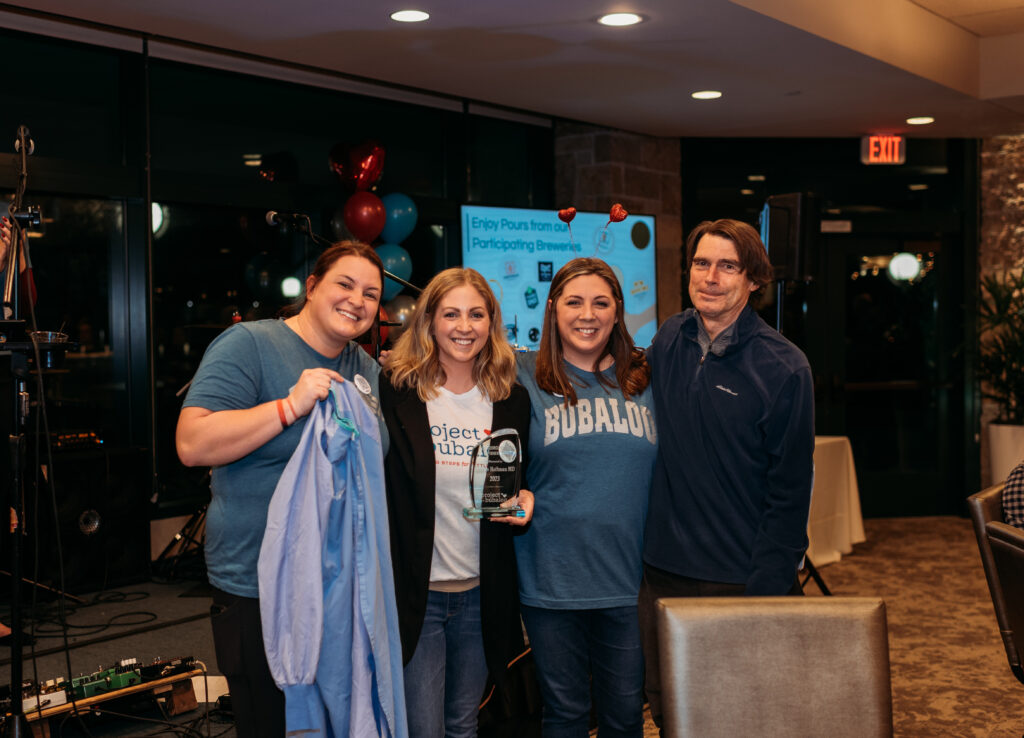
Hops for Hearts is Project Bubaloo’s biggest annual fundraiser.
The money Project Bubaloo raises from these activities fills an important gap. Less than one-tenth of the research funding the National Institutes of Health provides goes toward pediatric causes. Most of that money funds what Dr. Joy Lincoln, a researcher supported in part by Project Bubaloo, calls “safe science;” that is, questions that are hypothesis-driven and less exploratory.
Funding for the kind of science that has the potential to make the most difference has the highest rate of failure, making government agencies reluctant to spend taxpayer money on it. Those kinds of projects often must be bankrolled by private donations, such as the ones that come from Project Bubaloo.
“When we want to start stepping outside the box, raising the bar, pursuing projects with high risk and high return, that’s when philanthropy helps the most,” Lincoln says. “Foundations and families’ donations allow us to shift paradigms. We can use that money to perform more ambitious experiments, enhancing the training environment for the next generation.”
Each year, Project Bubaloo’s research grant committee picks scientists to support with grant money. Lincoln is one of them; she is researching risk assessment for patients with Bicuspid Aortic Valve, a common CHD that often causes complications in young adulthood. The other, Dr. John Baker, seeks to develop a better way of measuring how much radiation a CHD patient is exposed to in treatment and what its impact is on the body.
Even among professionals, the cause is personal. Lincoln’s brother was born with a CHD, which was the initial motivator to pursue cardiovascular research. Because of work like Lincoln’s, kids who 30 years ago would not have gotten to live at all now have a chance at survival. She hopes that more funding and more high-risk, high-reward research will result in even better outcomes.
“We hope to prolong and improve the quality of life for children and their families affected by CHD,” Lincoln says. “My long-term goal is to make a significant impact by using what we know about the biology of a person’s disease to develop personalized therapeutics. Currently, we take a ‘one treatment fits all’ approach to treating our patients, but by understanding why certain individuals are more at risk that others, we can better tailor their treatment plans for the best outcomes.”
The promise of a better future provides purpose to Chiroff, who works to honor Theo’s memory but says she does not want him to become the face of CHD. Instead, Chiroff says the struggle is about all the children, both alive and deceased, who fought their battles spiritedly.
“I used to care about things like how much money I made or what title was behind my name or how big my house was; all these things that seem important when you’re younger,” Chiroff says. “I don’t anymore. All of this has given me a new perspective on what’s important.”
This year’s Ultimate Heart Race is the morning of Sept. 9 at American Family Field. For more details on how to register, go to their website.
